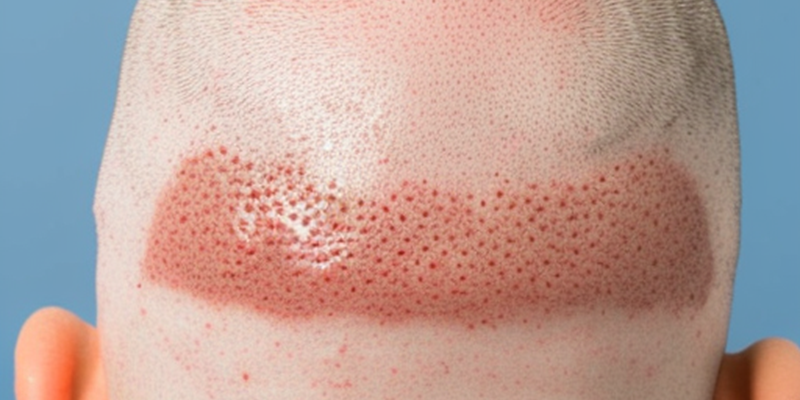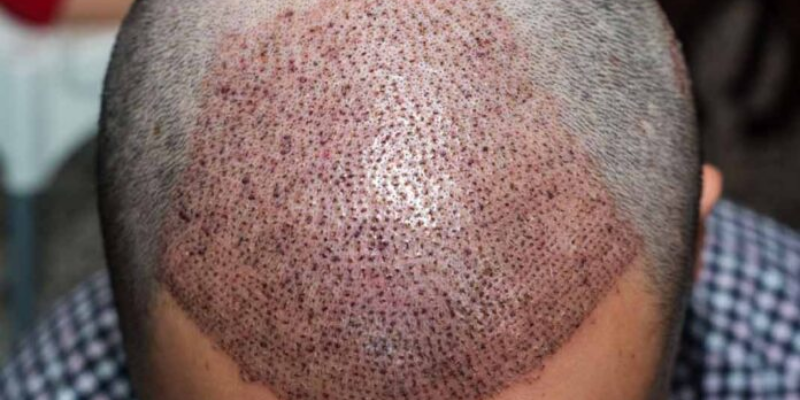Hair Transplant Procedure
The Hair Transplant Procedure During this post, we’d like to show you how the hair transplant procedure works. Sometimes men have a problem with hair loss because of illnesses and other things that happen outside of their bodies, and sometimes because of their genes. We have hair follicles on our crown and forehead that are very sensitive to the hormone testosterone, which makes them grow. On the other hand, the hair follicles in the nape of the neck are not sensitive.
Men have more of this hormone, so they have more hair loss. Because the hair follicles in different parts of the country react to hormones at different times, there are big differences in how much hair they lose (nape and top). Because the testosterone hormone is much less in women, hair loss in women is mostly caused by things outside of their bodies (such as wound, disease, stress, etc.).
Methods For Hair Transplant Procedure
When we look back at how hair transplants work, we see that the FUT technique is the first one to be used. There is no use for the FUT Technique right now. As a result of changes in medicine, the most popular FUE Technique has become more popular. With the FUE Technique, the DHI Method has been developed to meet the needs of more people in more places.
During the examination, it should be possible to figure out what kind of method is best for a person to use for hair transplantation. To help you understand why there isn’t a single answer to this problem that can be found by searching the internet, we’ll go over how each technique works, why they’re used for different things, and what makes them different.
It’s at this point that our doctors and assistants work on the hair transplant plan. They also make sure the area where the surgery will take place is ready for the procedure. We will clean the places where the grafts will be taken and the place where they will be transplanted. Sedation is applied by our anesthesiologist with a dose that is adjusted to the patient’s physiological condition, using medical monitoring devices. This is how we apply sedation.
How To Take Hair Follicles For Hair Transplant Procedure?
This is how you get hair follicles from the back and sides of your head one by one. The grafts that have been collected are split into single or multiple grafts. They put it in a special solution and store it at 4 ° C. This is how it works: As many grafts need to be transplanted as well as what kind of hairline they want to have on their head, a doctor will make a cut. An angle of 40 to 45 degrees is used to make incisions that go in the direction of hair growth.
Before putting in new hair grafts, one of the most important things to do is to start from where your hairline is and do single grafts in this area. Thus, hair transplant results that look more natural can be achieved. Grafts from the back of the head and from the beard area that have a lot of hair follicles are transplanted into the middle of the scalp to make it look fuller and thicker.
A bandage will cover the donor areas, which are the parts of the body where the hair follicles were removed, after the surgery. The day after surgery, patients are told what to do until they get a medical bandage.
FUE Method
They are called “grafts,” and they come from the donor area and are put in the channels that have been cut out in the area where they are going to be put in. People who have hair follicles that have some pieces of tissue call them “grafts,” which is what they are called. Grafts have 3-4 hair strands. To keep the grafts safe after they are taken from the donor area, they should be kept in special fluids and kept at a certain temperature.
DHI Method
FUE is the same method used to get grafts from the donor area as DHI, or Direct Hair Implantation. DHI is different from the FUE Method when it comes to putting the grafts in. Use a tool called Choi Implanter in the DHI Method. It is a tool with a very sharp point and looks like a pen. This device has a special feature: It opens up the space for the graft to be put in.
Differences Between FUE And DHI
A method called the DHI Method is good for more local hair loss. A scar, hair breaker, or something like that Such as a skin disease, post-surgical or stress-related regional shedding are areas of hair transplantation where the DHI method will be more effective than the FUE method. FUE is used when planting in large areas.
The number of grafts may vary depending on the hair transplantation method. Because the DHI Method adds about 1500-2500 grafts, 4000 grafts are used in the FUE method. During the DHI Method, it takes less time to recover and there are fewer blood clots after surgery. Between 6 and 8 hours, the FUE Technique does the surgery. In DHI Method, this time is longer.
Hair Transplant Procedure Aftercare
After having your hair transplanted, you will need to take care of your hair and your skin. People start taking care of their hair at the root. This isn’t always the case, no matter how good or shiny your hair is. This isn’t always the case, no matter how good or shiny your hair is. Make sure you don’t take care of your hair follicles at all. If you don’t, your hair will look weak and dull after a while. If you want to keep your hair follicles strong, there are three things you need to do. First, keep the scalp clean to keep bacteria and oil from forming.
Second, massage your body on a regular basis to improve blood flow. Finally, don’t dry your skin with natural oils. If you follow these three simple rules, your hair follicles will become more strong over time. Also, you can keep your skin and hair healthy at the same time.
Listen to The Hair Transplant Procedure from Previous Patients
Further information on the hair transplant procedure from previous patients can be obtained by speaking with them directly or through their hair transplant reviews. By doing so, you can get an idea of what to expect before, during, and after the procedure. Additionally, you may want to explore the different types of hair transplants available and ask your doctor questions about which one would be most suitable for your individual needs. Ultimately, it is important to educate yourself thoroughly prior to making any decisions regarding the treatment process. Doing so will ensure that you make an informed decision that best suits your needs and goals.

It is also important to seek advice from a professional medical team who has experience performing this type of hair transplant procedure before deciding on a particular option. Knowing what questions to ask and what resources are available is key in helping ensure a desirable outcome. A qualified hair transplant specialist will be able to answer any questions you may have about how the procedure works and provide guidance on selecting a clinic for the best possible results in terms of safety, cost-effectiveness, and natural-looking results.





